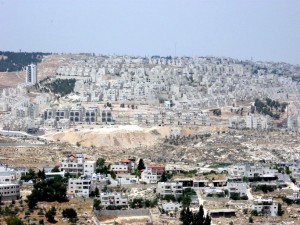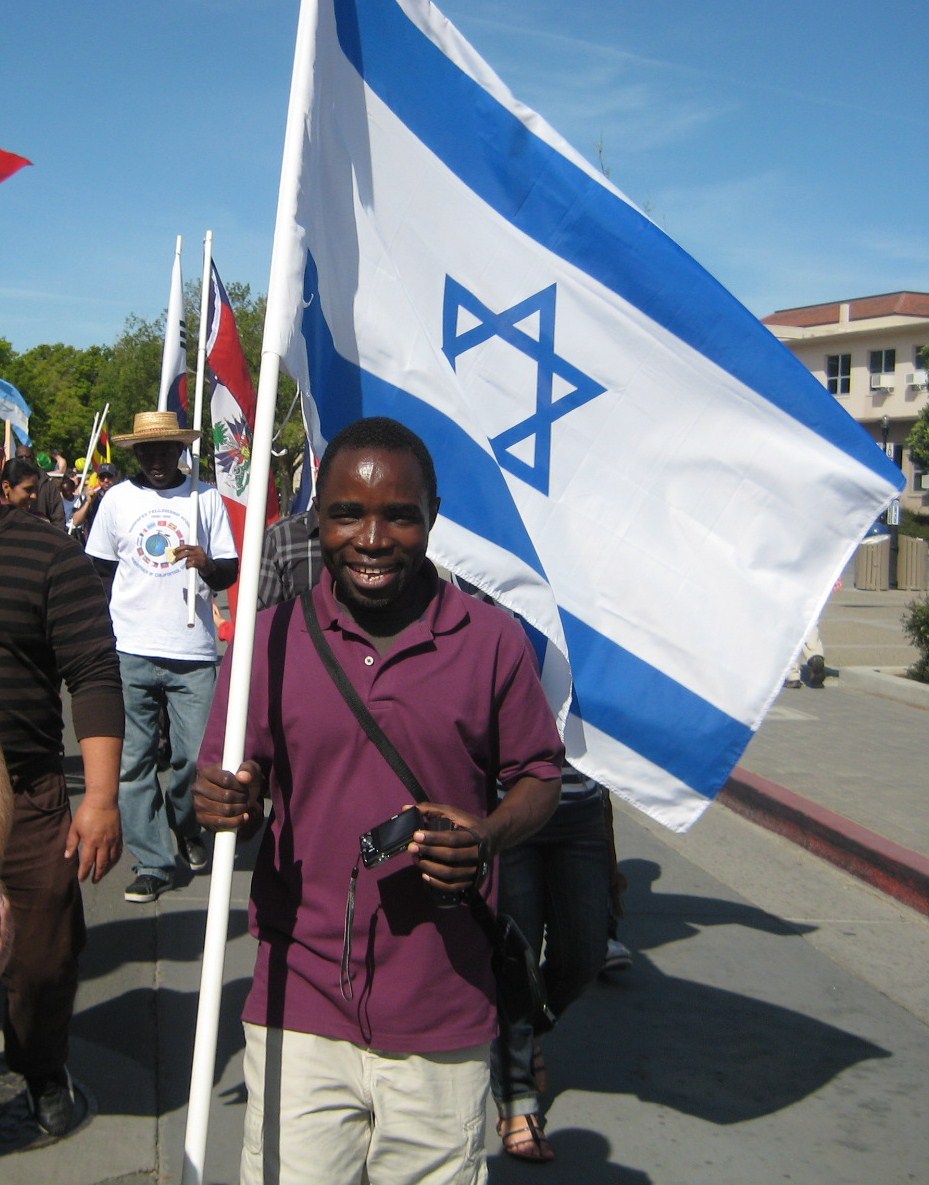
The Har Homa neighborhood of Jerusalem stretching downward from the top of the mountain. Note the Arab community of Beit Sahour in the foreground. Do the Europeans, the Palestinians, and anyone else really believe that Har Homa is not part of Israel?
Yesterday, Israel received a barrage of hypocritical criticism from the European Union and the Palestinians regarding the Jerusalem Muncipality’s decision to proceed with the building of 930 new housing units in the neighborhood of Har Homa –a decision which had been twice delayed in the Spring in deference to President Peres’ trip to Washington and PM Netanyahu’s visit to London. Actual construction will not begin until 2013.
Catherine Ashton, the do-nothing European Minister who is fighting for her job (see my blog: Her Excellency, The Baroness Buffoon, Catherine Ashton) presumptively declared–as if anyone cared: “I am profoundly disappointed by Thursday’s approval of a project that has triggered fierce criticism from the Palestinians and the international community.”
Saeb Erekat, who never misses an opportunity to conflate the importance of any event, similarly ranted (undoubtedly in coordination with Ashton): “[The approval] makes clear Israel’s intention to turn this occupation into effective annexation. This is a flagrant display of disrespect and disdain to the international community. . .”
Har Homa (literally translated as ‘Defense Wall’ Mountain), but officially named Homat Shmuel, is a Jewish neighborhood community of 20,000 residents located in southeastern Jerusalem–built on land annexed by Israel after the 1967 War. The community currently has 4 shopping centers, 3 medical clinics, 2 elementary schools, 7 daycare centers, and 13 kindergartens.
It is an immensely strategic piece of ‘high ground’–which is seared into the Israeli consciousness by the events that occurred there during the 1948 War of Independence. In that fighting, Har Homa was a key site where the Egyptian Muslim Brotherhood established a position which was subsequently taken over by the Jordanian Arab Legion. From Har Homa’s elevated position, the Arabs were able to control the area below–and many Israelis, especially in the Palmach, died trying to attack it.
Today, the strategic importance of Har Homa is enhanced by its location between the Arab neighborhoods of Jerusalem and the city of Bethlehem.
The history of land ownership at Har Homa is complex.
In the 1940s, prior to the War of Independence, 130 dunams (32 acres) of land on Har Homa (about 80% of the land) were purchased by a Jewish group. After the War, the Jordanians claimed ownership of the land through their occupation of Judea and Samaria. In 1971, the Israeli company Makor purchased the land and drew up extensive plans for its development–focusing on building luxury homes and a country club with golf course.
However, on July 12, 1992, Israeli Finance Minister Itzhak Modai signed the Har Homa Expropriation Act–which took the ownership of the land away from Makor. (The ostensible reason was that the government did not want luxury apartments to be built on the site. Makor continues fighting for compensation to this day: see ‘harhoma.com’).
When the Israeli government announced its intention to build on Har Homa in 1992, nearby residents of the Arab village of Beit Sahour–at the encouragement of ‘peace’ activists–suddenly claimed the land, but their claims (actually to only about 20% of the land) have not been acknowledged by the Israel Supreme Court as a reason for stopping development at the site.
In 1997, the issue of Israeli building on Har Homa came before the United Nations where two resolutions calling on Israel to cease construction were vetoed by the United States in the Security Council. Nevertheless, in 2008 and 2010, the United States’ governments of Bush and Obama criticized plans to build new housing.
In sum, the cynical way that the Europeans and Palestinians still lay claim to Har Homa is just further evidence of their completely distorted view of reality–a distorted view that gains them nothing but opprobrium here in Israel.


 A student from Malawi, who had worked with an Israeli health volunteer in his country battling AIDS, came up to us as we walked down the street in the UC-Davis Picnic Day Parade and wanted to carry the Israeli flag.
A student from Malawi, who had worked with an Israeli health volunteer in his country battling AIDS, came up to us as we walked down the street in the UC-Davis Picnic Day Parade and wanted to carry the Israeli flag.